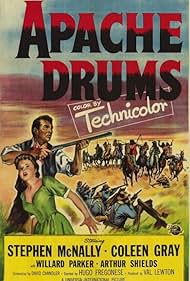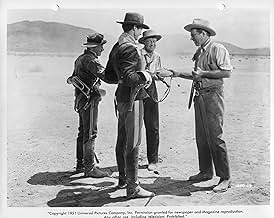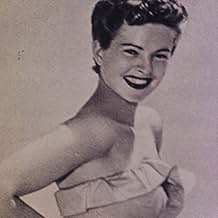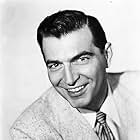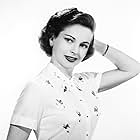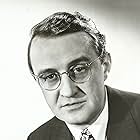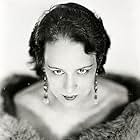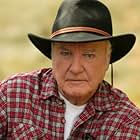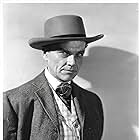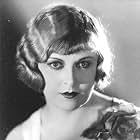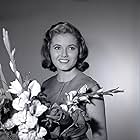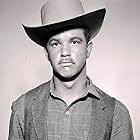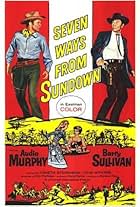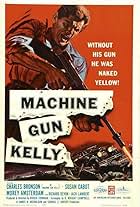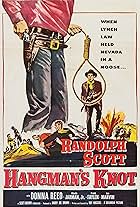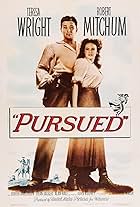A gambler is thrown out of a western town, but returns when the town is suddenly threatened by a band of marauding Apaches.A gambler is thrown out of a western town, but returns when the town is suddenly threatened by a band of marauding Apaches.A gambler is thrown out of a western town, but returns when the town is suddenly threatened by a band of marauding Apaches.
Gertrude Astor
- Townswoman
- (uncredited)
Bill Clark
- Townsman
- (uncredited)
Noreen Corcoran
- Child
- (uncredited)
Mason Alan Dinehart
- Child
- (uncredited)
Steve Dunhill
- Bob, a Townsman
- (uncredited)
- Director
- Writers
- All cast & crew
- Production, box office & more at IMDbPro
Storyline
Did you know
- TriviaThe "Apache" Indians are actually lifeguards from the beach at Santa Monica, California, painted with full body paint and made up to look like Apaches. Director Hugo Fregonese and producer Val Lewton wanted the Apaches to do a lot of leaping from high windows, off of roofs, etc., and the film's budget precluded hiring stuntmen to play the Apaches. They decided to hire the lifeguards because of their athleticism and, more importantly, the fact that they didn't have to get stuntmen's pay.
- GoofsThe Apache are shown beating the drums with their hands, whereas they and all Native Americans used sticks or drum beaters.
- Quotes
Rev. Griffin: If I live to bury Joe Madden, I'll say only four words over his grave: This was a man.
- ConnectionsFeatured in Val Lewton: The Man in the Shadows (2007)
Featured review
Like Lewton's horror films, one doesn't notice the low budget (the lowest ever for a color film at that time, per Lewton) because of the excellent character development and the plot tensions. And like his horror films, it's what you CAN'T see that's so terrifying. The final scene is in an adobe church with high, open windows. Outside one can hear the Apache drums and chants, the light from the burning town flickers on the walls, and one is forced to imagine the scene outside, as do the small band of settlers claustrophobically huddled inside. Indians appear at the windows from time to time like fun-house pop-ups. It's a nightmare situation mined for all its possibilities. Other scenes have a similar effect. A man without a gun comes on a just-massacred traveling party; suddenly, danger seems to exist all around him. Later, the hero is traveling with a party of armed men; suddenly he finds himself alone on foot on a flat plain with nowhere to take cover and a band of Apaches riding toward him at full gallop. And the opening scene: a gunfight occurs off-screen, shattering the peaceful scene of a kitten being served milk (an example of what Lewton called a "bus" scene after the sudden appearance of the bus in THE CAT PEOPLE). Though these situations may not be unique to this film, they are obviously the sort that appealed to Lewton, and are handled very effectively. But the core of the film is the characters: the protagonist, a card sharp who plays the angles (his nickname is "Slick") and is fast with a gun, a wise-ass who isn't all bad; the virtuous sheriff who isn't all good; the preacher, an old man with a lot of gumption, not a bad judge of character, but a reactionary Irish Catholic priest with a strong racial prejudice. Other typically interesting Lewton characters are the madam who's happy enough to leave town if someone will buy her out at a good price, the cavalry officer who understands the Indians, and particularly the stoic Indian scout, faithful to the settlers to the end. The very fact that these characters don't move to extremes in extreme situations, that they have both good and less positive traits, is what gives this film its grab. It's a film that doesn't force the viewer to follow its path, and doesn't automatically go to the dramatic limit suggested by the situation... That's why Lewton's films are great!
Details
- Runtime1 hour 16 minutes
- Aspect ratio
- 1.37 : 1
Contribute to this page
Suggest an edit or add missing content

